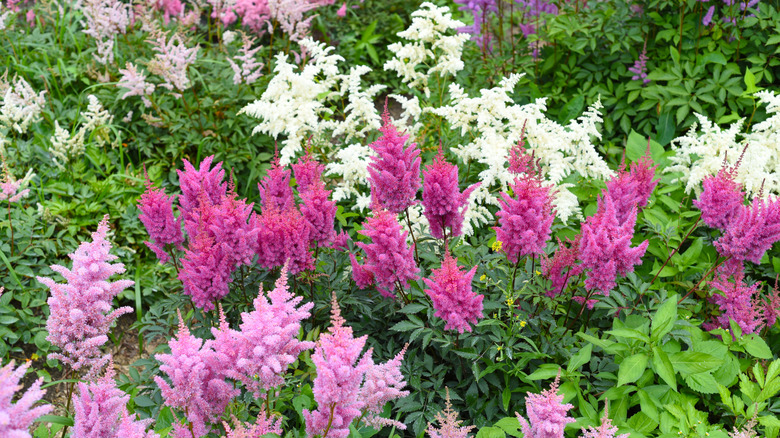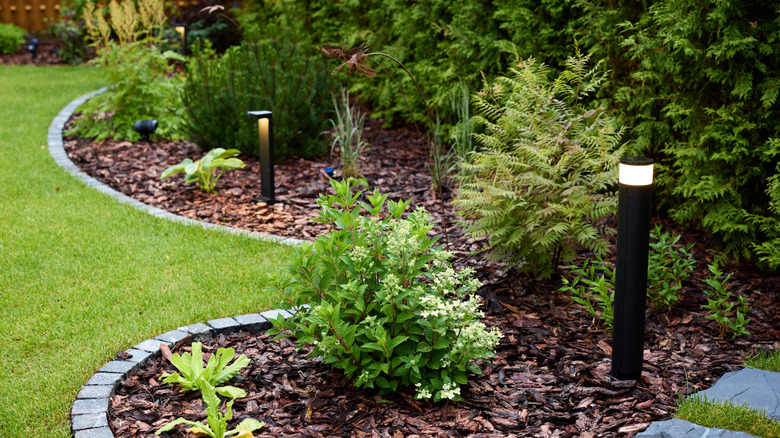Save Your Astilbe From Wilting In Hot Weather With This Soil Tip
The colorful blooms of false spirea, or astilbe, brighten even the darkest corners of your garden. Tall, feathery plumes in white, peach, lavender, and variations of red ranging from pink to crimson flower in spring, growing from one to three feet tall, depending on the cultivar. Astilbe needs moist, well-drained soil to thrive. Without enough water, the edges of the leaves brown and the foliage may become dormant. Adding a protective layer of mulch around the plants will help the soil retain moisture by reducing evaporation, so you may be able to avoid watering the plants in times when rainfall is normal. During a drought, you'll probably still need to drench the plants regularly. Wilting plants are a good indicator that they need water. Mulching also suppresses weeds and keeps the soil from getting too hot.
Astilbe thrives in enriched soil, has few significant pest problems, and is seldom severely damaged by deer. The plants need full or partial shade, making them perfect for a woodland or shade garden. Pair them with other shade lovers like leopard plant, foxglove, and Joe-Pye weed that share the same USDA 4 to 9 hardiness zone. Choose astilbe cultivars with different colored flowers, heights, and bloom times for a lively, summer-long profusion of plants. After the flowers are spent, the foliage will continue to provide a pleasant green backdrop.
Mulch to keep moisture-loving plants from wilting
Large plants like trees have extensive root systems that help keep them hydrated in hot weather or times of drought, but many herbaceous plants must depend on the water that's immediately available in the surrounding soil. Plants like astilbe need an inch of water every week during the growing season, more if there's an extended drought. If you're unsure about whether or not your flowers need water, dig down to see how deep the water has penetrated. If it's an inch or more, they don't need irrigation. When you prepare your garden patch before planting, dig organic material like manure or compost into the soil. This helps improve water absorption, especially in sandy or clay soil, and then spread a 2- to 3-inch layer of mulch on top of the prepared soil. Adding more than that interferes with the amount of water the plant gets.
Gardeners have a multitude of mulch choices. Organic mulches like compost, shredded bark, pine needles, and even shredded paper and cardboard have an advantage over other products. As they degrade, they add nutrients to the soil. Synthetic mulches like plastic sheeting and landscape fabric last longer than organic mulches that break down, but they may limit the amount of water that reaches the plant's roots, and they may interfere with the movement of things that are useful to the soil, like worms and microbes. Living mulches, groundcover plants like blue phlox, that enjoy the same moist areas as astilbe shade the ground and create water and air pockets in the soil.

